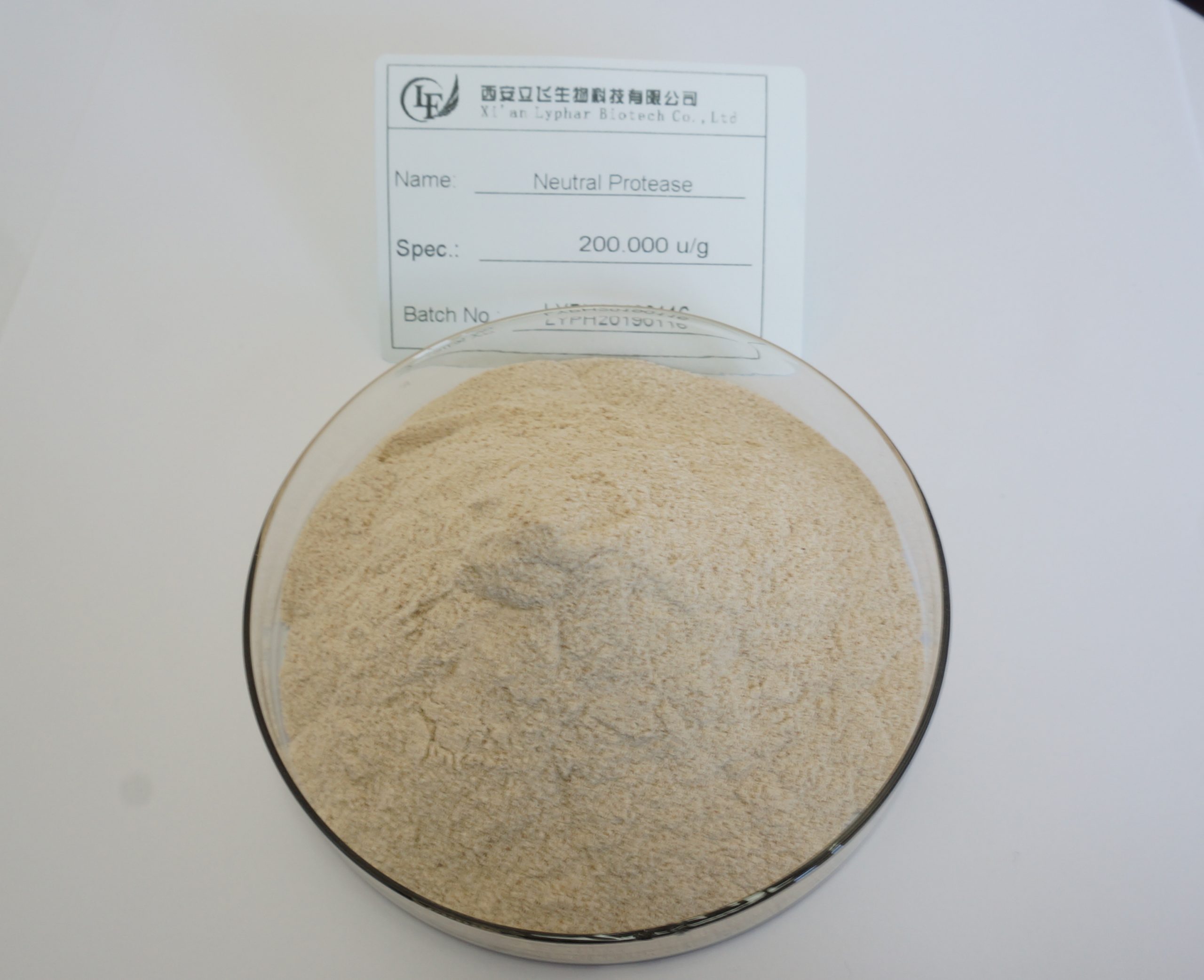Proteases, also known as proteolytic enzymes or proteinases, are enzymes that play a crucial role in the breakdown of proteins into smaller peptides or amino acids. These enzymes are essential for various biological processes and have important applications in industry and medicine. Here’s a brief overview of the efficacy and action of proteases:
Catalysis of Protein Hydrolysis: The primary function of proteases is to catalyze the hydrolysis of peptide bonds within proteins. This hydrolysis involves breaking the bonds between amino acids, ultimately leading to the degradation of the protein into smaller fragments.
Specificity: Proteases exhibit a high degree of specificity for the peptide bonds they cleave. Different proteases have distinct specificities, which are determined by the amino acid sequence around the target peptide bond. Some proteases cleave after specific amino acids (e.g., trypsin cleaves after lysine or arginine), while others are more non-specific (e.g., pepsin in the stomach).
Physiological Roles: In biological systems, proteases are involved in various essential processes, including protein turnover, digestion, blood clotting, immune response, and tissue remodeling. For example, digestive enzymes like pepsin and trypsin help break down dietary proteins in the stomach and small intestine, making them absorbable by the body.
Regulation: The activity of proteases is tightly regulated in living organisms to prevent uncontrolled protein degradation. Regulatory mechanisms include the secretion of inactive protease zymogens (proenzymes), which are activated when needed, and the presence of protease inhibitors to counterbalance their activity.

Industrial and Biotechnological Applications: Proteases have numerous applications in industry and biotechnology. They are used in processes such as laundry detergents to remove protein stains, in the food industry to tenderize meat, and in biopharmaceuticals to break down proteins for research or therapeutic purposes.
Medical Applications: Proteases are also used in medical settings. For instance, they are employed in wound care to remove dead tissue, promote tissue healing, and reduce inflammation. In certain disease conditions, such as cancer, proteases may be overactive, leading to tissue damage and invasion.
Enzyme Replacement Therapy: In some genetic disorders, individuals lack specific proteases or have non-functional ones. Enzyme replacement therapy can provide the missing protease to help break down specific substrates, improving the patient’s health and well-being.
In summary, proteases are highly effective enzymes that play a fundamental role in protein metabolism and various other biological and industrial processes. Their specificity and controlled activity are crucial for maintaining the health and proper functioning of living organisms, as well as for numerous practical applications.
The negative impact of the Protease
Protease inhibitors are a class of drugs used primarily in the treatment of HIV/AIDS. These medications inhibit the activity of an enzyme called protease, which is necessary for the replication of the virus. While protease inhibitors have been crucial in improving the prognosis and quality of life for many people living with HIV, they can also have negative impacts. Here are some of the potential negative effects associated with protease inhibitors:
Side Effects: Like many medications, protease inhibitors can cause side effects. Common side effects may include nausea, diarrhea, abdominal pain, and increased cholesterol and triglyceride levels. Some individuals may also experience skin rashes, fatigue, and changes in the distribution of body fat (lipodystrophy).
Drug Interactions: Protease inhibitors are metabolized in the liver, and they can interact with other medications that are also processed through the same liver enzymes. These interactions can lead to changes in the levels of other drugs in the body, potentially reducing their effectiveness or increasing their toxicity.
Resistance: Over time, HIV can develop resistance to protease inhibitors if they are not taken as prescribed. This resistance can limit the effectiveness of these drugs and necessitate the use of alternative HIV medications.
Adherence Challenges: Protease inhibitors are typically taken multiple times a day, and they often need to be taken with food to optimize absorption. Maintaining strict adherence to this regimen can be challenging, and missing doses can lead to treatment failure.

Long-Term Effects: Long-term use of protease inhibitors has been associated with various health concerns, such as increased cardiovascular risk due to elevated cholesterol and triglyceride levels. Additionally, lipodystrophy, which involves changes in body fat distribution, is a long-term concern.
Cost: Some protease inhibitors can be expensive, which can be a barrier to access for some individuals, particularly in regions with limited healthcare resources.
Psychological and Social Impact: Living with HIV and taking antiretroviral medications, including protease inhibitors, can have a psychological and social impact. Stigma and discrimination are still significant issues, and the need for lifelong treatment can be emotionally challenging for some.
It’s important to note that while protease inhibitors have these potential negative impacts, they have been instrumental in the management of HIV/AIDS. When used as prescribed and under the supervision of healthcare professionals, these medications can significantly suppress the virus and allow individuals to live longer, healthier lives. The decision to use protease inhibitors should be made in consultation with a healthcare provider, taking into account the potential benefits and risks in each individual case.
